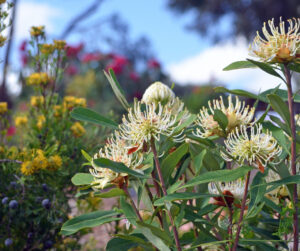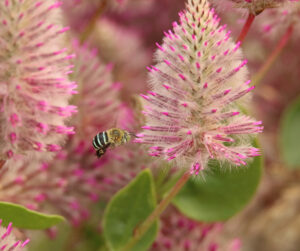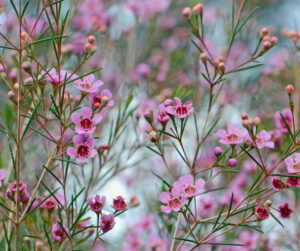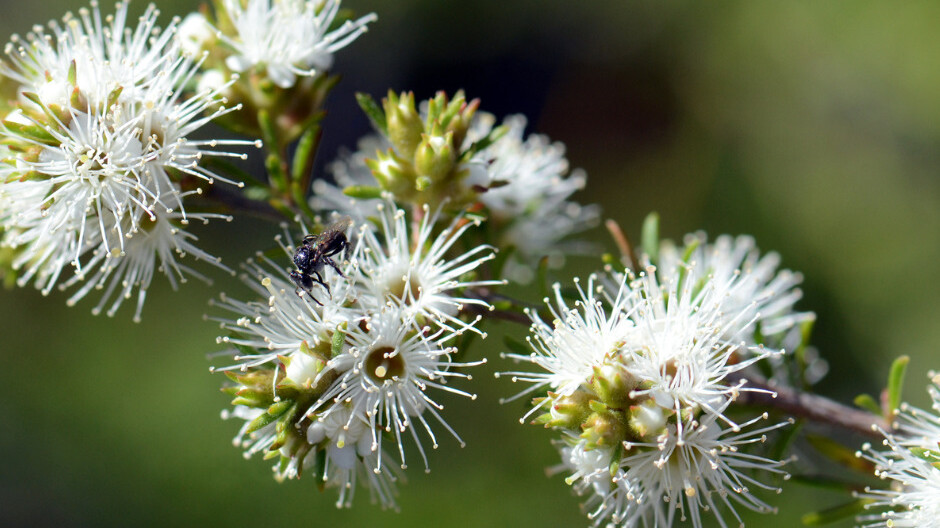As we become increasingly aware of the importance of preserving our natural ecosystems, one simple and powerful way to make a positive impact is by planting native flowers in your garden. Australia, with its unique and diverse range of flora and fauna, offers an ideal setting for wildflower gardening. This article explores the numerous benefits of wildflower gardening and how it can support native insects to create a thriving and sustainable local ecosystem.
The Case for Wildflower Gardens

Australia’s rich flora and fauna make it an ideal canvas for wildflower gardening. Here are a few reasons why you should consider planting native Australian wildflowers.
Fostering Biodiversity
Native flowers are a potent tool to nurture biodiversity in your vicinity. A mix of flowering plants accommodates a diverse range of native insects, ensuring a year-round haven for them.
Essential Pollinators
Native insects, including bees, flies, wasps, and even ants, play a critical role in pollination. By creating a thriving habitat for these crucial species, you enable the reproduction of countless plant species. At the same time, it increases the yields of your home-grown produce. From the delicious fruits and vegetables in your garden to the beautiful flowers adorning your landscape, insect pollinators are the unsung heroes behind a bountiful harvest.
Natural Pest Control
In addition to pollination, native insects also offer valuable pest control services. They prey on harmful insects that might otherwise damage your garden and crops. This natural form of pest control reduces the need for chemical pesticides.
Low-Maintenance Choices
Native flowering species are well-adapted to the local climate and soil conditions, making them low-maintenance choices for your garden. They have evolved to thrive in Australia’s specific environmental conditions, reducing the need for excessive watering and fertiliser. This helps save time, effort, and money.
Enjoying the Beauty of Native Flora
In addition to their ecological benefits, native flowers offer a stunning array of colours and shapes that can transform your garden into a vibrant and beautiful space.

Growing Your Wildflower Garden: A Short Planting Guide
Kickstart a wildflower garden with this list of native Australian wildflowers that you can use to attract native insects to your garden, along with the insects they can attract and their benefits:
Billy Buttons (Craspedia spp.)
- Attracts: Native bees and butterflies.
- Benefits: Billy Buttons produce vibrant yellow spherical flowers that provide nectar for native bees and are a food source for butterflies.
Kangaroo Grass (Themeda triandra)
- Attracts: Native grasshoppers and caterpillars.
- Benefits: Kangaroo Grass serves as a host plant for various native insects, making it an essential component of a balanced ecosystem.
Common Everlasting (Chrysocephalum apiculatum)
- Attracts: Native bees, butterflies, and moths.
- Benefits: The yellow flowers of this perennial attract a range of pollinators, while the foliage provides habitat for small insects.
Bush Pea (Pultenaea spp.)
- Attracts: Native bees, beetles, flies, and hoverflies.
- Benefits: Bush Pea plants have bright yellow or red flowers that are a nectar and pollen source for native bees and other pollinators, supporting biodiversity in your garden.
Mulla Mulla (Ptilotus spp.)
- Attracts: Native bees, butterflies, wasps, moths, and bee flies.
- Benefits: The unique cylindrical flowers of Mulla Mulla are an excellent nectar source for native bees and a striking addition to your garden.
Geraldton Wax (Chamelaucium uncinatum)

- Attracts: Native bees, flies, beetles, and honeyeaters.
- Benefits: The fragrant flowers of Geraldton Wax attract native bees and nectar-feeding birds like honeyeaters, contributing to pollination and local bird diversity.
Hakea (Hakea spp.)
- Attracts: Native bees, moths, ants, wasps, beetles, small marsupials, and honeyeaters.
- Benefits: Hakea plants produce nectar- and pollen-rich flowers, making them a valuable resource for native bees and butterflies in your garden.
Dampiera (Dampiera spp.)
- Attracts: Native bees, hoverflies, and small native wasps.
- Benefits: Dampiera’s vibrant blue or purple flowers provide nectar for native bees and offer nesting sites for small wasps.
Emu Bush (Eremophila spp.)
- Attracts: Native bees and honeyeaters.
- Benefits: Emu Bush is well-known for its tubular flowers, attracting various pollinators, particularly native bees and nectar-feeding birds.
Daisy Bush (Olearia spp.)
- Attracts: Native bees, hoverflies, beetles, flies, moths, and butterflies.
- BeDiscover Wildflower Gardening: Attract native insects and reap the rewards: Daisy Bush, with its white or pink daisy-like flowers, provides nectar and pollen for native bees and a food source for butterflies.
These native wildflowers offer a diverse range of colours, shapes, and sizes to enhance the beauty of your garden while supporting local ecosystems. By planting these species, you will provide food and habitat for a wide array of native insects, contributing to the health of your garden and the broader Australian environment. Win-win.
Related Articles:
Wildflower gardens – What’s the buzz about?
In the quest for sustainable and environmentally conscious practices, gardening enthusiasts and nature lovers alike are turning to a time-tested…
Garden Journaling – Slow down to tune in.
As we move through the year and our gardens evolve, there's something magical about documenting the journey. Garden journaling is an art that enables…
Climate Resilient Gardening
Introduction Gardeners in Australia are facing a race against time as they experience the growing impact of climate change in their own gardens. The…
Strawberries
I adore strawberries (Fragaria sp.), and one of my earliest memories is a birthday cake absolutely heaving under the weight of a sack full of home…




